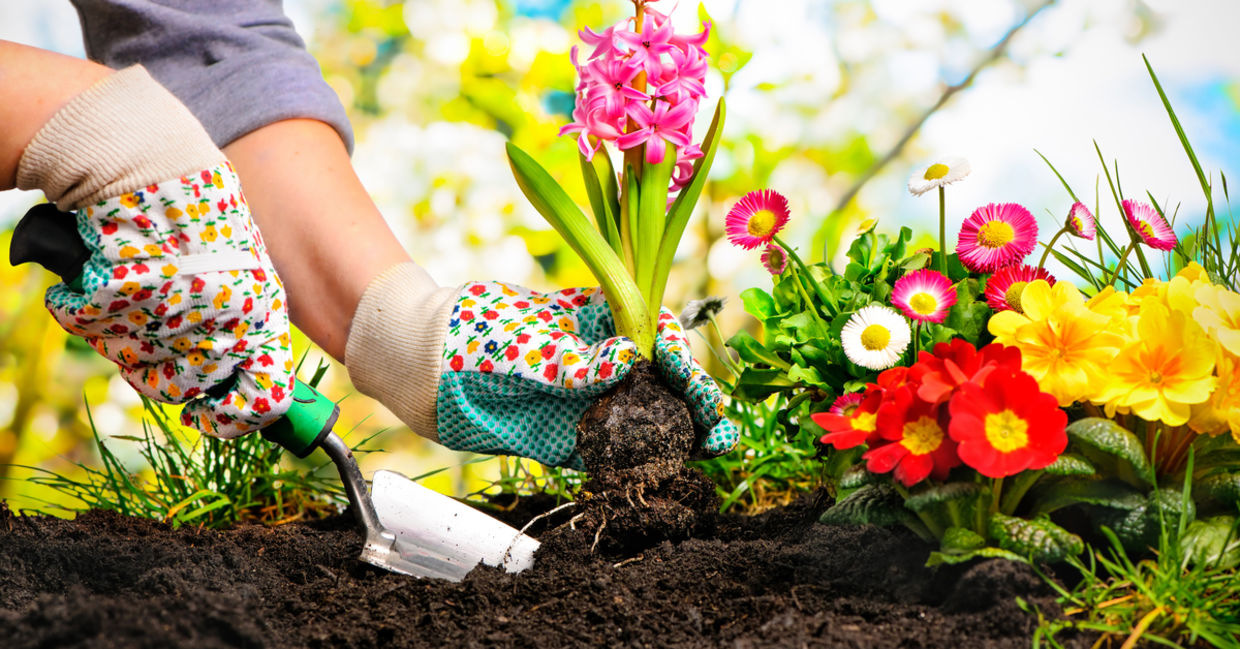
(Alexander Raths / Shutterstock.com)
Gardening helps reconnect with nature and put that spring back in your step. Doctors now recommend this light activity for its many health benefits. Spending just 30 minutes a day gardening promotes well being and reduces stress, according to a Dutch study. Spending a little time working the soil can also help get a better night’s rest. Even if you don’t have a green thumb, everyone has to start somewhere! Below you can find a beginner’s guide to starting a garden.
Pick Your Plants
Do you want an herb garden? A vegetable garden? A flower garden? If you want to grow vegetables or herbs, consider which types of foods you and your family like to eat. If you want to grow flowers, you’ll need to decide if you want annuals that bloom all summer but need replanting every spring, or would you rather plant perennials that have a shorter bloom time but come back every year?
Below you can find a few easy plants for beginners
- Annuals: Calendula, cosmos, geraniums, impatiens, marigolds, sunflowers, and zinnias
- Perennials: Black-eyed Susans, daylilies, lamb's-ears, pansies, phlox, purple coneflowers, and Russian sage
- Vegetables: Cucumbers, lettuce, peppers, and tomatoes
You don’t need to grow a farm overnight. If you’re new to gardening, start slow and start small. Begin by choosing a couple of plants to tend and add a few new ones each year. Rather than buying the seed, you can also jump-start your garden by buying baby plants or potted herbs.
Find the Perfect Place for Your Garden
Most fruits and vegetables require 6-8 hours of direct sunlight every day. You’ll need to check for spots on your property that get enough sun. Otherwise, many other plants like ferns and hostas can grow in shaded areas. Plant tags at nurseries will explain light requirements so your garden can flourish!
You’ll want to consider a few other factors when selecting the spot for your garden:
- Try to find a flat area. Sloping gardens are more difficult and expensive to tend.
- Check windbreaks to avoid damage from strong winds.
- Select a spot that you won’t forget like near the mailbox or somewhere visible from the window so you’ll easily notice its pleas for attention.
Clear the Ground
If you want to build a garden from the ground (rather than a raised bed or pots), you’ll need to remove the grass. For fast results, cut out the sod by slicing under with a spade. You can cut the sod in sections so it’s easier to take out. Adding newspaper to the grass can also clear the ground, but will take more time (about four months).
Fertilize the Soil
Prepare the soil for planting by adding organic matter to the soil before sowing the first seed (Or transplanting a seedling). Organic matter (basically a decaying plant or animal material) like compost, green manure, leaf mold, and animal manure will help your garden thrive.
Work the Soil
Working the soil through tilling and digging helps roots grow more easily and increases access to water and nutrients. Tools like a rototiller can help when working with a large area. Make sure not to overdo it: excessive tilling can damage soil structure and kill microorganisms and worms.
Digging using a sharp spade or spading fork provides a practical way to work the soil in small beds. Make sure to dig only when the soil is moist enough to form into a loose ball in your fist but dry enough to fall apart when you drop it. Then take the tools to turn the top 8 to 12 inches while mixing with the organic matter.
Plant Your Garden
You’ll need to pick the right time to plant, depending on what you decide to grow. Plants like kale and pansies handle cold temperatures, and you can plant them in the fall or winter. Annual flowers and tomatoes prefer the warm so wait to plant until the frost has passed. Other plants, like sunflowers and lettuce, grow easily from the seed. Check the plant packet for instructions.
Tend Your Garden
Once you’ve planted your garden, you’ll want to provide enough water. Seedlings should never dry out so make sure to water each day. Then taper watering as plants grow. Transplants need watering often, about every other day, for their roots to grow. After, you can likely water your plants once a week. However, watering can also depend on factors like soil, humidity, and rainfall. When it doubt, feel the soil 3 to 4 inches. If it feels dry, water.
You won’t have to water as often if you add a couple of inches of mulch. Bark, compost, or cocoa bean shells protect your garden and helps keep the soil nourished.
Make sure to keep your garden up with regular watering. Remove weeds and dying vegetation. Hosing off destructive insects or spraying insecticidal soap from a garden center will help protect plants.
Voilà! You’ve got a beautiful garden!
YOU MIGHT ALSO LIKE:
5 Inspiring Urban Community Garden Projects for City-Dwellers
With EcoGarden Anyone Can Garden Sustainably and on the Go
Over 1 Million Gardeners Came Together to Save the World's Pollinators







